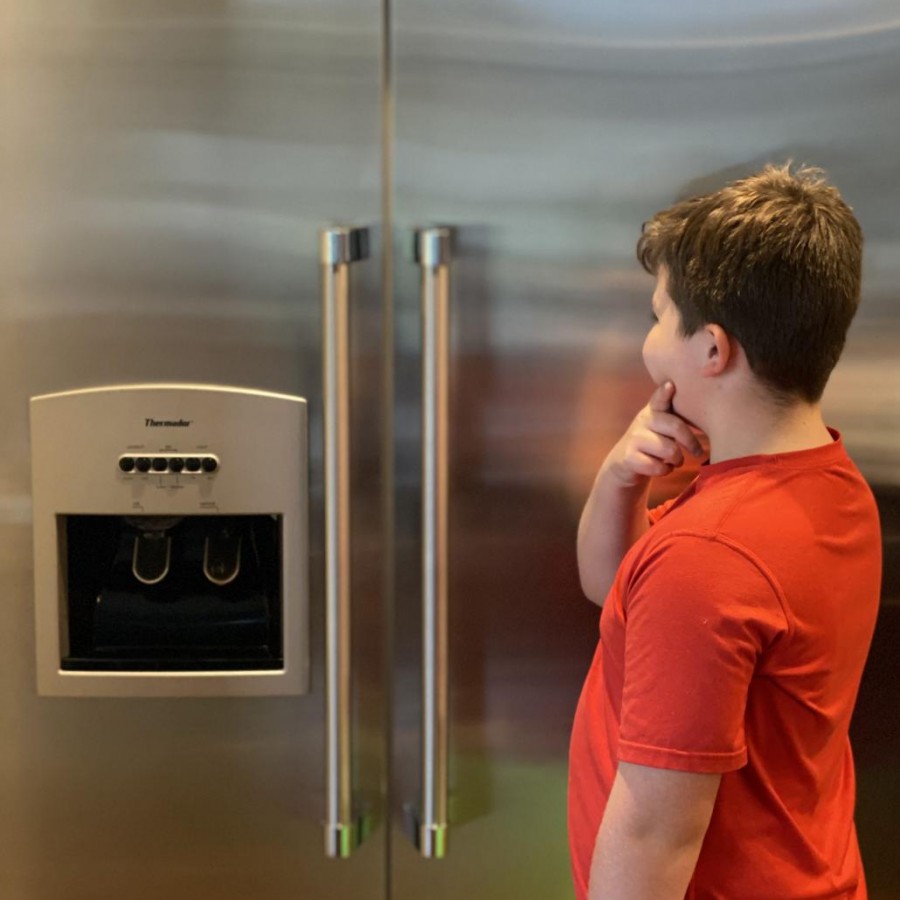We use things like hair dryers, refrigerators and microwaves everyday, but how many people actually understand the science behind them? Below is an explanation of the science principles behind five common household items.
1. Refrigerators
We all know fridges keep things cold, but do you know how? It all comes down to the second law of thermodynamics which states that energy always flows from hot to cold.
The fridge has a loop of tubes which contains fluid. The fluid starts by getting compressed which in turn increases the temperature of the fluid. After the compression, the hot, pressurized fluid flows through a series of metal coils. Since the fluid is hotter than the atmosphere, the energy flows out of the fluid and into the atmosphere.
At the end of the tubes is an expansion device. Quickly expanding the fluid causes the temperature to rapidly drop. In the final step of the process, the fluid runs through the inside of the fridge. The inside of the fridge is hotter than the fluid, so the energy in the fridge goes into the fluid ultimately cooling the inside. The fluid then returns to the compression device and the cycle continues.
2. Microwaves
Microwaves are leftovers’ best friend, but do you know how a microwave heats up your food? To understand the science behind microwaves, you need to know about the electromagnetic (EM) spectrum. The EM spectrum ranges from radio waves to gamma rays. The closer a wave is to gamma rays, the higher energy it has. Microwaves are on the lower end of the spectrum, but that’s important as it gives them the right wavelength to heat up food.
A device called a magnetron produces microwaves that bounce between the metal walls of the microwave. These microwaves have a wavelength which amplifies the wavelength of water. This means that as the microwaves hit the water molecules in the food, they are giving the water more energy and therefore heating it up. This ultimately heats up your food.
3. Faucets
The story behind faucets starts at water towers. These towers bring water up really high which creates a lot of pressure. This pressure is what pushes the water through the pipes of your home. Faucets are designed to control the flow of the water. When you turn the faucet on, you are actually opening a valve which lets water come through with a certain pressure.
4.Hair dryers
Hair dryers work through electrical resistance. The back end of the hair dryer has a fan which sucks cool air in. The air then goes through a series of heating coils. These coils have electricity running through them, but since the coil material is highly resistant, a lot of the energy in the electricity gets converted into heat. Switching a hair dryer to cool mode simply stops the electricity from going through the coils.
5. Fans
Contrary to popular belief, fans do not blow cool air; instead they create what are called convection cells. Elementary science has taught us that hot air rises and cool air falls. This phenomenon has to do with the density of the air. Cool air has less energy, so the molecules are closer together. This makes the cold air denser than the warm air.
However, energy likes to go from hot to cold. This means that the hot air is constantly giving up energy to the cold air. Eventually, the hot air becomes cold air and vice versa, so the gas begins to cycle around the room. A fan speeds up this process by pushing the warm air down to become cool air.
Now you know some of the science principles behind household appliances. The next time you grab something from the fridge and heat it up in the microwave, take a second to appreciate the science and engineering behind these everyday items.














